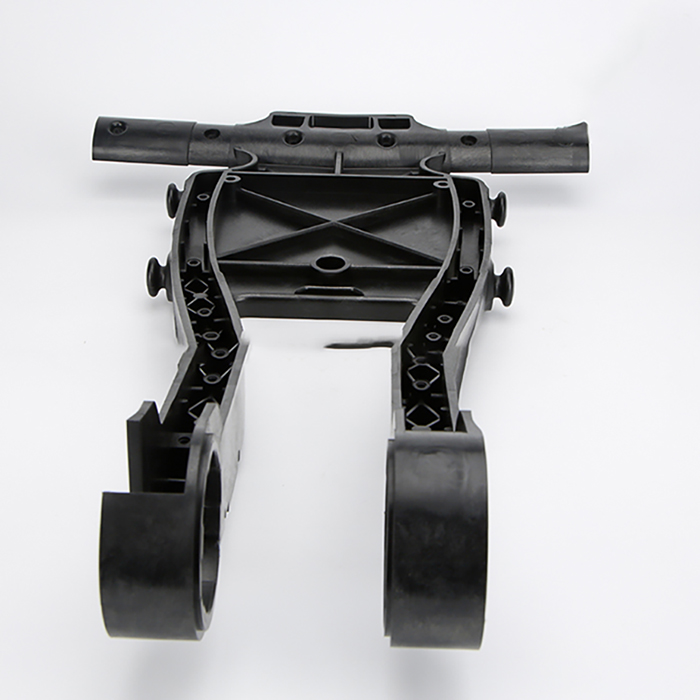Table of Contents
Benefits of Plastic Roller Injection Molding in Manufacturing Processes
Plastic roller injection molding is a widely used manufacturing process that offers numerous benefits for companies looking to produce high-quality plastic rollers. This method involves injecting molten plastic material into a mold cavity, where it cools and solidifies to form the desired roller shape. The process is highly versatile and can be used to create rollers of various sizes, shapes, and materials, making it a popular choice for many industries.
One of the key advantages of plastic roller injection molding is its cost-effectiveness. The process allows for high-volume production at a relatively low cost per unit, making it an attractive option for companies looking to scale up their manufacturing operations. Additionally, the ability to create complex roller designs with precision and consistency helps reduce waste and improve overall efficiency in the production process.
| Product Name | OEM Plastic injection molding Parts |
| Technology | Foaming / Ordinary Injection / Structual Foam Molding / Over-Molding / Gas Assisted Injection Molding |
Another benefit of plastic roller injection molding is its versatility. This method can accommodate a wide range of plastic materials, including thermoplastics, thermosets, and elastomers, allowing companies to choose the most suitable material for their specific application. Additionally, the process can produce rollers with varying hardness, flexibility, and durability, making it ideal for a variety of industrial applications.
Plastic roller injection molding also offers excellent dimensional accuracy and surface finish. The use of high-quality molds and advanced manufacturing techniques ensures that each roller is produced to exact specifications, with minimal variation in size or shape. This level of precision is essential for industries that require tight tolerances and consistent performance from their rollers.
Furthermore, plastic roller injection molding is a highly efficient process that can help companies reduce lead times and improve overall production speed. The ability to quickly produce large quantities of rollers in a single run minimizes downtime and allows for faster turnaround times, helping companies meet tight deadlines and customer demands.
In addition to its cost-effectiveness, versatility, and efficiency, plastic roller injection molding also offers environmental benefits. The process generates minimal waste, as any excess material can be recycled and reused in future production runs. This helps reduce the environmental impact of manufacturing operations and aligns with sustainable business practices.
Overall, plastic roller injection molding is a valuable manufacturing process that offers numerous benefits for companies looking to produce high-quality plastic rollers. From cost-effectiveness and versatility to precision and efficiency, this method provides a competitive advantage for industries that rely on durable and reliable rollers for their operations. By leveraging the advantages of plastic roller injection molding, companies can enhance their manufacturing processes and achieve greater success in today’s competitive market.
How to Choose the Right Plastic Material for Roller Injection Molding Applications
Plastic roller injection molding is a widely used manufacturing process for producing high-quality plastic rollers for various applications. When it comes to choosing the right plastic material for roller injection molding, there are several factors to consider to ensure the final product meets the desired specifications and performance requirements.
One of the most important factors to consider when selecting a plastic material for roller injection molding is the intended application of the roller. Different applications require different properties in the plastic material, such as strength, durability, chemical resistance, and temperature resistance. For example, rollers used in conveyor systems may require a material that is abrasion-resistant and can withstand high temperatures, while rollers used in food processing equipment may need to be food-grade and resistant to chemicals.
Another important factor to consider is the mechanical properties of the plastic material. The material should have the right balance of stiffness and flexibility to ensure the roller can withstand the stresses and strains it will be subjected to during operation. Additionally, the material should have good impact resistance to prevent cracking or breaking under load.
In addition to mechanical properties, it is also important to consider the thermal properties of the plastic material. The material should have a high heat deflection temperature to prevent deformation or softening at elevated temperatures. It should also have good thermal conductivity to ensure efficient heat dissipation during operation.
Chemical resistance is another important consideration when choosing a plastic material for roller injection molding. The material should be resistant to chemicals, oils, and solvents that it may come into contact with during use. This is especially important for rollers used in industrial applications where exposure to harsh chemicals is common.
When selecting a plastic material for roller injection molding, it is also important to consider the processing characteristics of the material. Some materials may require specific processing conditions, such as temperature and pressure, to achieve the desired properties in the final product. It is important to choose a material that is compatible with the injection molding process and can be easily processed to produce high-quality rollers.
One of the most commonly used plastic materials for roller injection molding is polyurethane. Polyurethane offers a good balance of mechanical properties, chemical resistance, and thermal properties, making it suitable for a wide range of applications. It is also easy to process and can be customized to meet specific requirements for hardness, color, and other properties.
In conclusion, choosing the right plastic material for roller injection molding is essential to ensure the final product meets the desired specifications and performance requirements. By considering factors such as application requirements, mechanical properties, thermal properties, chemical resistance, and processing characteristics, manufacturers can select the best material for their specific application. Polyurethane is a popular choice for roller injection molding due to its versatile properties and ease of processing.



